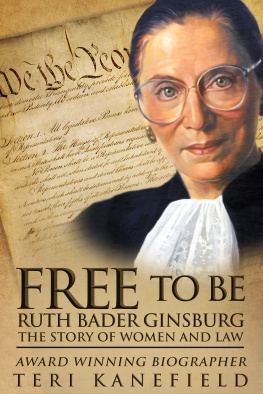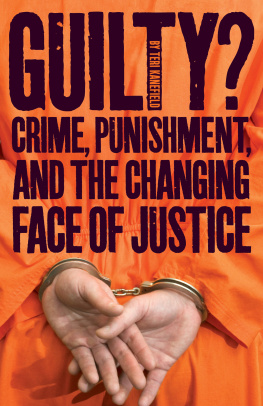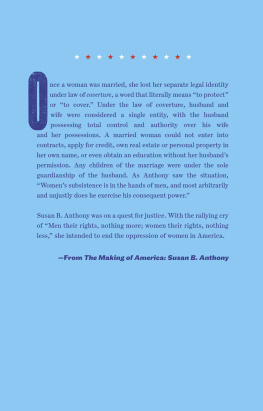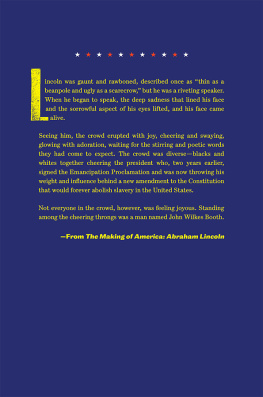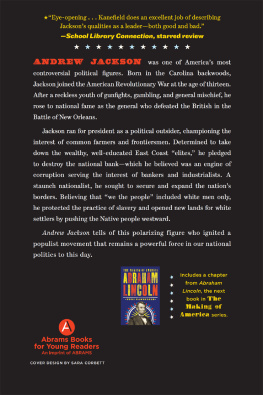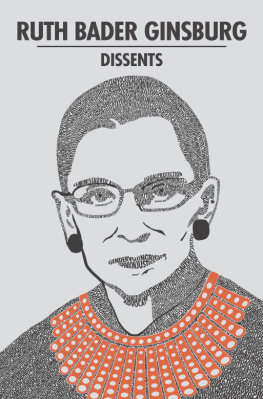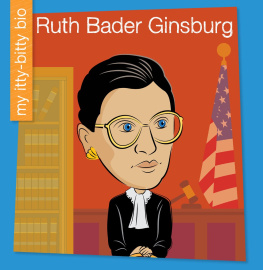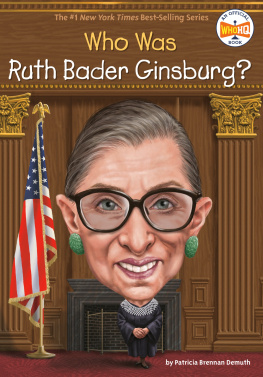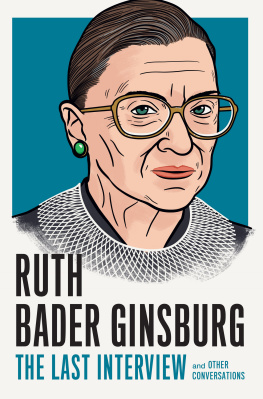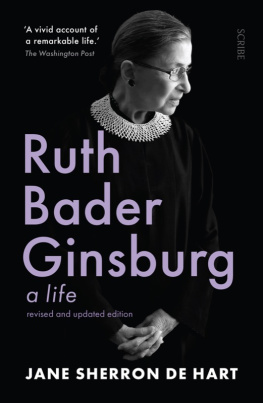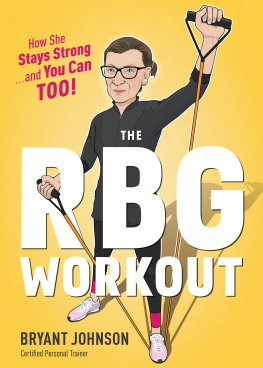Teri Kanefield - Free to Be Ruth Bader Ginsburg
Here you can read online Teri Kanefield - Free to Be Ruth Bader Ginsburg full text of the book (entire story) in english for free. Download pdf and epub, get meaning, cover and reviews about this ebook. year: 2016, publisher: Armon Books, genre: Non-fiction. Description of the work, (preface) as well as reviews are available. Best literature library LitArk.com created for fans of good reading and offers a wide selection of genres:
Romance novel
Science fiction
Adventure
Detective
Science
History
Home and family
Prose
Art
Politics
Computer
Non-fiction
Religion
Business
Children
Humor
Choose a favorite category and find really read worthwhile books. Enjoy immersion in the world of imagination, feel the emotions of the characters or learn something new for yourself, make an fascinating discovery.
- Book:Free to Be Ruth Bader Ginsburg
- Author:
- Publisher:Armon Books
- Genre:
- Year:2016
- Rating:3 / 5
- Favourites:Add to favourites
- Your mark:
- 60
- 1
- 2
- 3
- 4
- 5
Free to Be Ruth Bader Ginsburg: summary, description and annotation
We offer to read an annotation, description, summary or preface (depends on what the author of the book "Free to Be Ruth Bader Ginsburg" wrote himself). If you haven't found the necessary information about the book — write in the comments, we will try to find it.
Free to Be Ruth Bader Ginsburg — read online for free the complete book (whole text) full work
Below is the text of the book, divided by pages. System saving the place of the last page read, allows you to conveniently read the book "Free to Be Ruth Bader Ginsburg" online for free, without having to search again every time where you left off. Put a bookmark, and you can go to the page where you finished reading at any time.
Font size:
Interval:
Bookmark:
Free to Be
Ruth Bader Ginsburg
The story of womeN and law
Teri Kanefield

945 Taraval Street, #130
San Francisco, CA 94116
Cover design by Streetlight Graphics
Painting of Ruth Bader Ginsburg by Simmie Knox
Commissioned by the Supreme Court of the United States

Ruth Bader Ginsburg as a college senior in 1954
(Collection of the Supreme Court of the United States)
Authors Note: While describing Ruth Bader Ginsburgs childhood and early life, I will refer to her by her first name. After she becomes a judge, I will refer to her as Judge Ginsburg, Justice Ginsburg, oras is common when referring to Supreme Court justicesjust plain Ginsburg.
Nathan Bader was born in 1896 in a shtetl near Odessa in the Russian Empire, the kind of village immortalized in the work of Yiddish writer Sholem Aleichem and the musical Fiddler on the Roof . It was a place where life had continued unchanged for generations, where Jewswhile sharing a village with Gentileslargely governed themselves and lived separate lives. Nathan was nine years old when a violent series of pogroms broke out in the region, leaving thousands of Jews dead and many more homeless. That same year, the Baders decided there was no future for them in Imperial Russia.
Nathans father left first, journeying to the United States to earn passage for the rest of the family. Four years later, the rest of the family joined him, becoming part of the great migration that brought one and a half million Jews from Eastern Europe to America.
They settled in New Yorks Lower East Side, a crowded and gritty district packed with tenement buildings, synagogues, libraries, shops, department stores, and grocery stores. Known as a notorious slum, the capital of Jewish America, almost everything was Jewish-owned and Jewish-runbanks, shops, grocery stores, even the garment factories and department stores. By the time the Baders arrived, the district was packed with more than seven hundred people per acre, making it one of the most crowded neighborhoods in the world.
The young man who would become father to one of the centurys most brilliant legal minds had no formal education other than night school, where he learned English. Nathan, described as warm and likable, followed the time-honored path of Jewish immigrants and went into the garment business. He specialized as a furrier.
Unfortunately, Nathan didnt have a good head for business. Fortunately, he married Celia Amster, who did. Celias roots were also Eastern European. Her parents immigrated to the United States from somewhere in the Austrian Empire, arriving in New York just four months before her birth in 1902, making her the first member of her family to be born in the United States. The fourth of seven children, she was smart, driven, and a voracious reader, graduating at the age of fifteen with top grades from Washington Irving High School in Manhattans Gramercy Park neighborhood. Because she was a girl, her grades meant little to her family, who pinned their hopes of higher education and social advancement on her oldest brother. All family members were expected to work to send the oldest boy to college, so when Celia went to work as a bookkeeper in the garment industry, part of her salary went toward her brothers college expenses.
Celia quit her job once she and Nathan were married. Nathan held the view, common at the time, that a working wife meant a man was unable to support his family. From inside the home, Celia was able to give Nathan the help he needed to keep his business profitable. She performed clerical and bookkeeping duties, helping to keep the business afloat even during the Great Depression, when very few people were buying furs.
Nathan and Celia Bader lived in a small, well-kept house on East Ninth in the Flatbush district of Brooklyn. Their first child, Marilyn, was born in 1927. Next, in 1933 when Marilyn was six, came Joan Ruth, nicknamed Kikipronounced Kickyby her sister.
Kiki was a year old when Marilyn died of meningitis. Although Kiki was too young to remember Marilyn, her sisters death lent an ever-present air of sadness to their home. Marilyns death left Kiki an only child, but her childhood was anything but lonely, surrounded as she was by a large, closely-knit extended familylots of aunts, uncles, and cousins. Kiki particularly enjoyed the Passover Seder when she was still the youngest at the table and was thus the child who asked the traditional four questions. Each summer, she attended the Jewish Camp Che-Na-Wah in the Adirondacks, a camp founded by her uncle SolomonCelias oldest brother, who she had helped send to college.
Among Kikis early memories were weekly trips with her mother to the local library, which was housed over a Chinese restaurant. Kiki selected her books for the week. She enjoyed reading mysteries and Greek mythology. While at the time, Kiki didnt question the prescribed order for girls and boys, later she credited the Nancy Drew series with planting the idea that a girl could be an adventurer who thought for herself, a doer who didnt fit the usual gender stereotypes of the 1930s and 1940s. She wanted to be either Nancy Drew or Amelia Earhart when she grew up.
Celia changed the order of her daughters names from Joan Ruth to Ruth Joan when enrolling her in school. Celia saw several other Joans already signed up, so she enrolled Kiki as Ruth Joan Bader. Kiki attended Public School 238, grades K8, a tall brick building with hardwood parquet floors and high windows located a mere block and a half from the Baders home. The school was crowded, with more than a thousand students, and often as many as thirty children per class. Kiki wrote an editorial for the school newspaper entitled Landmarks of Constitutional Freedom, tracing the foundations of American law from the Magna Carta to the present day.
Easygoing Nathan was the soft touch, the parent who would have spoiled Kiki had Celia allowed it. Celia was the parent with demanding standards, who went over Kikis homework and made sure she practiced piano. Once, when Kiki brought home a less-than-perfect report card, Celia made clear her displeasure. That was the end of less-than-perfect report cards from Kiki.
The Jews in the Baders neighborhood mixed freely with immigrants from Ireland and Italy. Kikis best friend, Marilyn DeLutio, was the daughter of Sicilian immigrants, and Kiki was often in their home. Beyond the safe confines of the Baders circle of family and friends, however, lurked the specter of anti-Semitism. Brooklyn during Kikis childhood was a place where boys on the street had fistfights over whether the Jews had killed Jesus, and where many still believed that Jews needed the blood of Christian boys to make their matzos. Once in the 1930s Kiki was driving with her parents through Pennsylvania when she saw a sign in front of a hotel that said, No dogs or Jews allowed the same sort of sign that appeared in Germany, instilling in American Jews the fear that the violent wave of anti-Semitism taking hold in Germany might find a footing in America as well. Much later, during the hearings in which Kikithen, of course, Judge Ginsburgwas confirmed to the U.S. Supreme Court, Senator Kennedy asked her about her sensitivity to racial issues. She explained that growing up Jewish during World War II sensitized her to the marginalization of groups.
Celia introduced both Kiki and her cousin Richard to art at the Brooklyn Academy of Music, buying subscriptions to the Saturday childrens performances. When Kiki was eleven, one of her aunts took her to a condensed version of La Gioconda , a production designed to stimulate a childs appreciation of opera. The settings were bare, and sections were narrated so the entire opera could be performed in an hour, but the vocals were glorious, and Kiki fell in love with opera. Now she had a new fantasyto be a great diva. She learned early, though, that she had no talent for singing. A grade school teacher told her she was a sparrow and not a robin, so when the others sang, she was to simply mouth the words. Later she said she sang in two places, her dreams and the shower.
Font size:
Interval:
Bookmark:
Similar books «Free to Be Ruth Bader Ginsburg»
Look at similar books to Free to Be Ruth Bader Ginsburg. We have selected literature similar in name and meaning in the hope of providing readers with more options to find new, interesting, not yet read works.
Discussion, reviews of the book Free to Be Ruth Bader Ginsburg and just readers' own opinions. Leave your comments, write what you think about the work, its meaning or the main characters. Specify what exactly you liked and what you didn't like, and why you think so.

